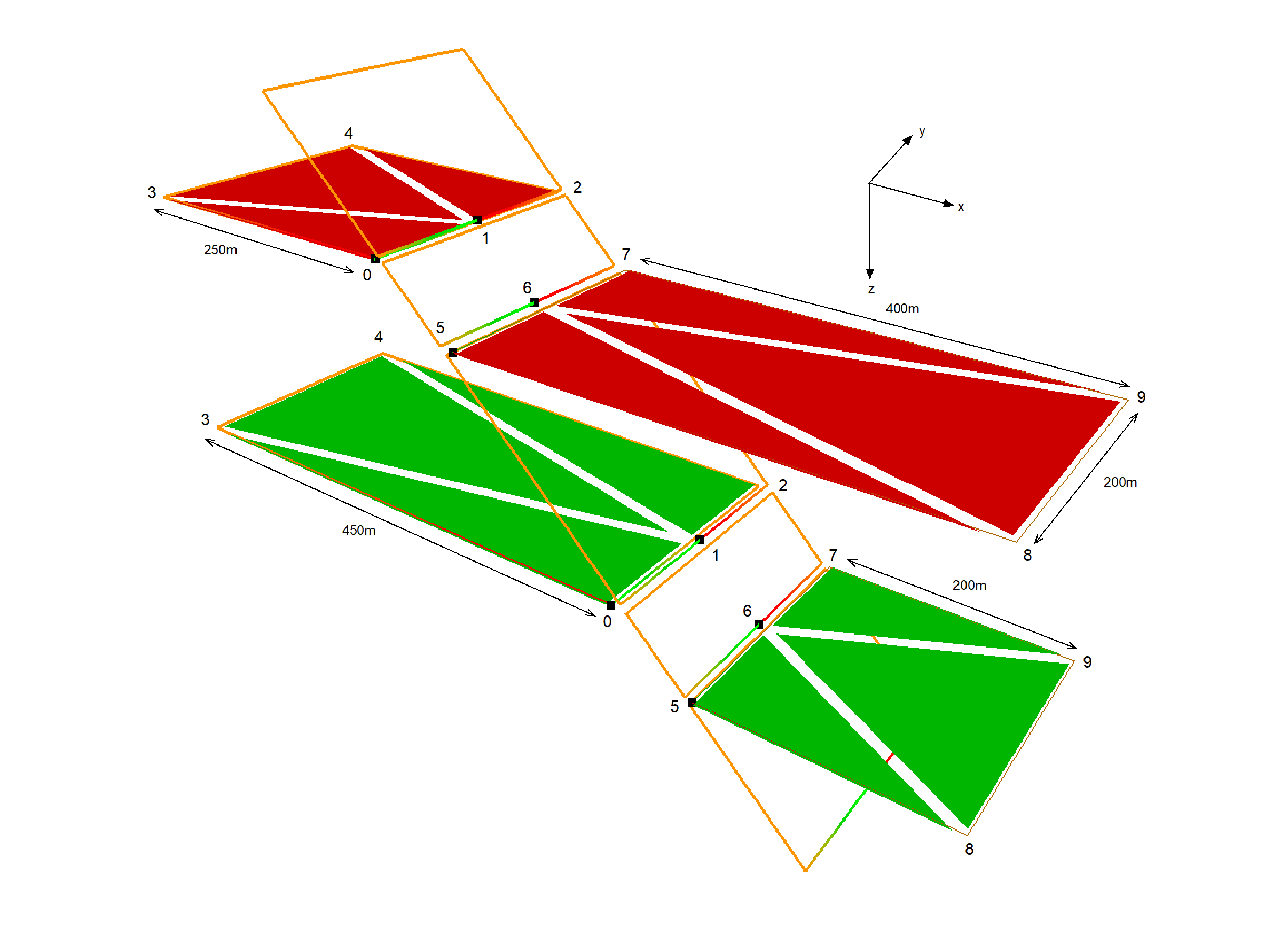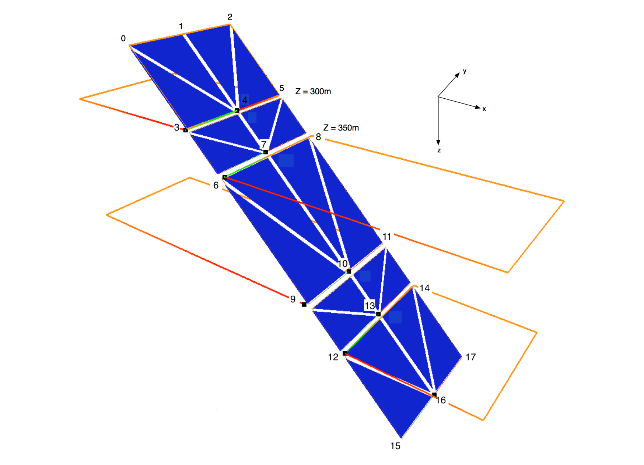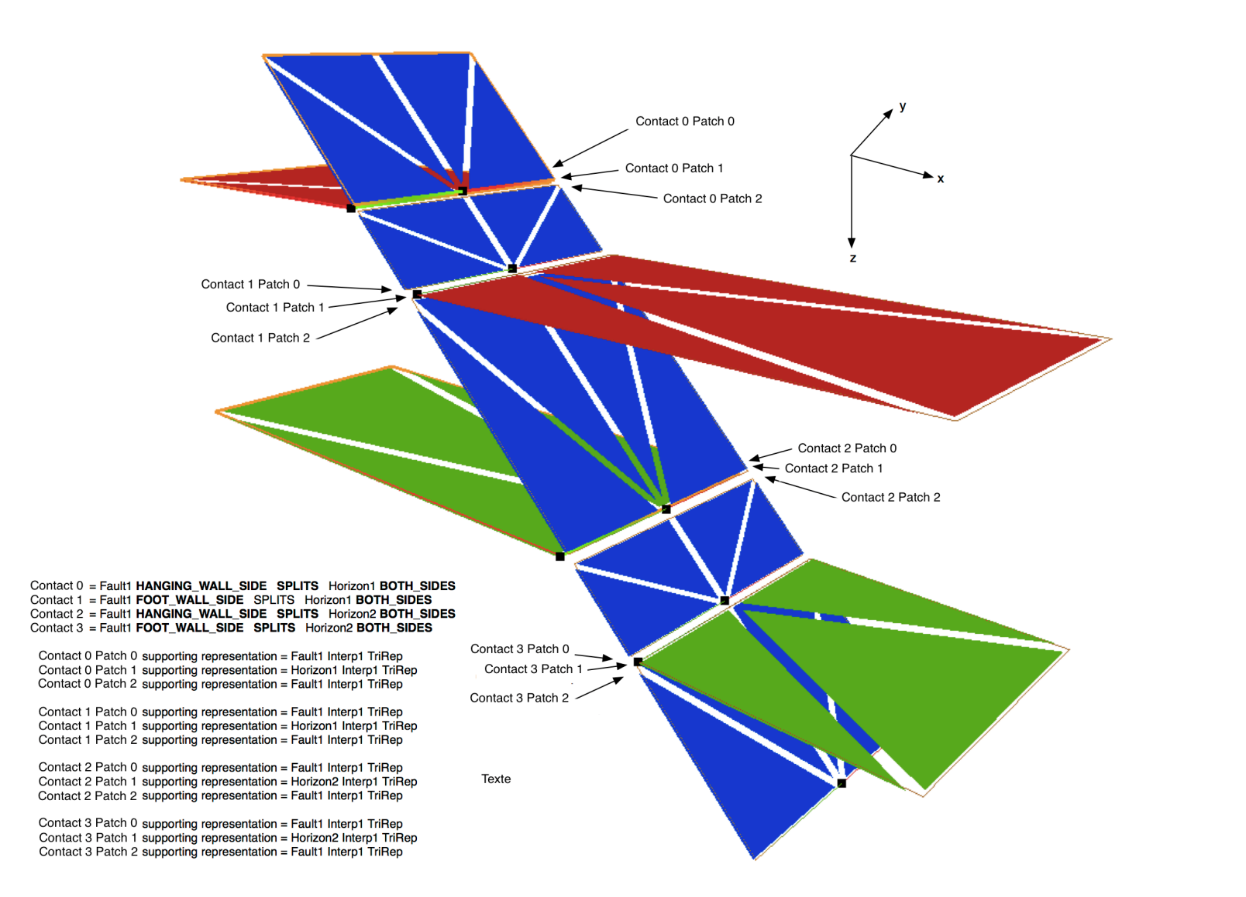9.3.1.2.3 Creating a Sealed Surface Framework Representation in a Structural Organization Interpretation
| Topic Version | 1 | Published | 09/11/2015 | |
| For Standard | RESQML v2.0.1 | |||
9.3.1.1.2 Organization Interpretations Set Up . This EPC_2 also contains their representations, which can exist on different supports (2D grid, triangulated surfaces, polyline sets, 3D points).
The objective of the next sub-step is to obtain a true boundary representation (BREP) of this structural organization interpretation.
Software D imports EPC_2 and uses it to define in detail the topological association of individual nodes of the different supports to build a topologically consistent sealed surface framework (Figure 9.3.1.2.3-1). For each node belonging to one support, the geometry is defined only once.
To build such a sealed surface framework this Software D must realize “clean” intersections between faults and faults, horizons and faults, and horizons and horizons, at least. As an added benefit, this Software D associates the nodes of the intersection lines together. In this case, this framework is sealed because the patches are limited by the intersection lines, and the nodes of the intersection lines could be the same on both sides of the intersection ( Figure 9.3.1.2.3-3 and Figure 9.3.1.2.3-4 ).
Because all the connected patches share their nodes while intersecting, the intersection line is defined as a subrepresentation of the patches, and the geometry of the nodes of the intersection are defined only once in the patch representation. (For more information on subrepresentations, see 6.3 Patches .)




The objective of this sealed framework is to avoid geometric differences between two equivalent nodes, difference which could be generated by different 3D gridding software packages that have different geometrical functionality. (For more information on equivalent nodes and colocation in RESQML, see 6.5 Representation Identities .)
This sealed surface framework is an important part of the sealed volume framework, which is discussed in Section 9.3.1.3 Step 3: Stratigraphic Modeling .
Software D exports an EPC_3 package with a lot of new consistent representations, which can be used as a base directly by a 3D grid builder or to set up a stratigraphic organization, which is discussed in the next section.